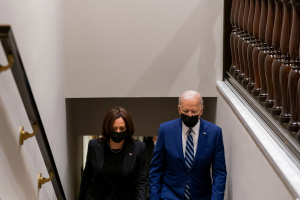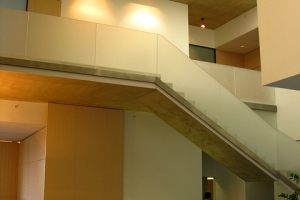Support migrant centric journalism today and donate

Following an announcement made by the US Department of Homeland Security (DHS) on May 4, 2016, of its intent to increase the application fee schedule for US Citizenship and Immigration Services (USCIS) for non-immigrant and immigrant visas, the DHS has stated that it will receive and review comments regarding the proposed fee increases before finalising the new US visa fee structure.
As reported by Workpermit.com, the DHS filed its notice of intent via the Federal Register – the Daily Journal of the United States Government – and has given until July 5, 2016 for comments to be submitted concerning the proposals outlined in the notice. At the conclusion of the comment period, DHS will review the comments before proceeding to finalize the new rules. It is likely that the proposed changes will go ahead.
Sanwar Ali, Editor of workpermit.com has the following comments to make:
As mentioned in a previous report USCIS has been criticised for its' poor standards of service, antiquated systems and poor decision making. For example to apply for an L-1 intra-company transfer visa you have to typically provide a large bundle of documents in duplicate. Other Countries grant similar visas with a fraction of the documentation requirements. Decision making by USCIS is frequently unjust and unfair. For example for no good reason the visa denial rate for Indian nationals has been over fifty percent.
Department of Homeland Security Justification for USCIS Visa Fee Increase
The DHS says that the fee increases will be introduced in order to recover costs for their services and to maintain an 'adequate' service.' The USCIS is a self-sustaining agency, funded almost entirely by the collection of filing fees. The agency reviews its finances every other year to identify where adjustments can be made.
This is done taking into account resources needed for anticipated needs, national security interests, and to meet customer service targets for visa processing. It's been six years since the USCIS last increased visa fees and as a result of an estimated $560 million shortfall for providing services at the current fee level, USCIS has determined that costs must increase.
The DHS said: "The proposed fee increases would allow USCIS to continue to support itself and account for the costs of processing fee-exempt applications, increased refugee processing, and administration of the Systematic Alien Verification for Entitlements (SAVE) program and the Office of Citizenship."
The average increase in fees is 21 percent, however, visas used by US companies to bring skilled workers into the country, immigrant investors creating jobs for US workers and immigrants with extraordinary ability are those that will see the highest increases in visa fees.
The DHS has released the following, outlining the fee adjustments being proposed for some of the most common US visa applications.
| Application | Current Fee | Proposed Fee |
|---|---|---|
| I-129 Petition for a Non-immigrant Worker (i.e. H and L applications such as the H-1B and L-1 visa) | $325 | $460 |
| I-130 Petition for Alien Relative | $420 | $535 |
| I-131 Application for Travel Document | $360 | $575 |
| I-140 Immigrant Petition for Alien Worker | $580 | $700 |
| I-485 Application to Register Permanent Residence or Adjust Status | $1,070* | $1,225* |
| I-539 Application to Extend/Change Non-immigrant Status | $290 | $370 |
| I-765 Application for Employment Authorization | $380 | $410 |
*These amounts take into account the compulsory $85 biometrics charge and no addition fee for I-765 and I-131 filed simultaneously.
Increasing access to citizenship – Lower Fees for some
Aside from the overall visa fee hikes, in a bid to increase access to US citizenship, the proposed changes will see a tiered fee option for a Naturalization application (Form N-400). While in general the fee for an application will rise from $595 to $640, under the proposals there will be a reduced fee of $320 for some.
This lower fee will be changed to applicants whose total family income falls between 150% and 200% of the Federal Poverty Lines. There will also be fee exemptions for Naturalization applicants who serve with the US military and any person who has an approved fee waiver.
Other fee increases include additional fees for EB-5 Immigrant Investor Providers
For EB-5 immigrant investor visas, the new proposals include a fee of $3,035, which is applied to the Annual Certification (Form I-924A) for employment-based immigrant visas in the fifth preference (EB-5) immigrant investor program for regional centers. This will make it more expensive for businesses that run EB-5 regional centers to provide services for applicants for EB-5 visas. Most EB-5 immigrant entrepreneur applications are made via EB-5 regional centers.
The proposed new rule also features provisions that would enable USCIS to request any benefits applicant to attend a biometric appointment – at a cost of $85 to the applicant. USCIS will also be entitled to decline applications lodged, in the event that checks are dishonored or if fees for biometric services are not included as part of an application.
Should the new filing fees get the go ahead which is likely, the new schedule would be applicable for a period of two years. Currently, applications filed with the US Department of Labor (DOL), in relation to immigrant and non-immigrant visa processes, do not require fees. However, there's the potential for the DOL to introduce fees for such applications in the future. There are no plans to do so at the moment.
Should the DOL implement fees, this will have an impact on the overall cost of employment-based immigration sponsorship.
Critics of the proposed fee increases say that although the USCIS has not increased fees since November 2010, the current level of service is poor and therefore, the USA visa fee increases cannot be justified.
Presently, the fee increases are proposals only, but will most likely become final fee increases without any major, if any, changes. It's understood that the fee increases will most likely occur late in the summer.





















